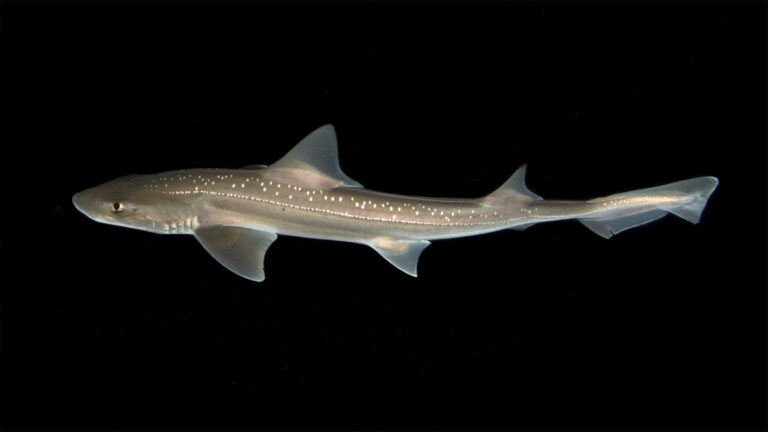biologist: A scientist involved in the study of living things.
cartilage: (adj. cartilaginous) A type of strong connective tissue often found in joints, the nose and ear. In certain primitive fishes, such as sharks and rays, cartilage provides an internal structure — or skeleton — for their bodies.
estuary: (adj. estuarine) The mouth of a large river, where it empties into the ocean and freshwater and saltwater mix. Such regions are often nurseries for young fish.
evolutionary biologist: Someone who studies the adaptive processes that have led to the diversity of life on Earth. These scientists can study many different subjects, including the microbiology and genetics of living organisms, how species change to adapt, and the fossil record (to assess how various ancient species are related to each other and to modern-day relatives).
field: (in physics) A region in space where certain physical effects operate, such as magnetism (created by a magnetic field), gravity (by a gravitational field), mass (by a Higgs field) or electricity (by an electrical field).
hertz: The frequency with which something (such as a wavelength) occurs, measured in the number of times the cycle repeats during each second of time.
marine: Having to do with the ocean world or environment.
mosaic: Something made from an assembly of different types of objects.
New Zealand: An island nation in the southwest Pacific Ocean, roughly 1,500 kilometers (some 900 miles) east of Australia. Its “mainland” — consisting of a North and South Island — is quite volcanically active. In addition, the country includes many far smaller offshore islands.
predator: (adjective: predatory) A creature that preys on other animals for most or all of its food.
prey: (n.) Animal species eaten by others. (v.) To attack and eat another species.
range: The full extent or distribution of something. For instance, a plant or animal’s range is the area over which it naturally exists. (in math or for measurements) The extent to which values can vary (such as the highest to lowest temperatures). Also, the distance within which something can be reached or perceived.
ray: (in biology) A term for members of kite-shaped fish in the shark family. They actually resemble flattened sharks with wide fins that resemble wings.
shark: A type of predatory fish that has survived in one form or another for hundreds of millions of years. Cartilage, not bone, gives its body structure. Like skates and rays, sharks belong to a group known as elasmobranchs. They tend to grow and mature slowly and have few young. Some lay eggs, others give birth to live young.
skates: (in biology) A type of diamond-shaped fish with a flat underside and long, skinny tail. Wing-like pectoral (side) fins sweep down from nearly their snouts to the beginning of their tails. They wave these fins to navigate, almost as though flying through the sea. Skates lay eggs in leathery sacks commonly known as “mermaid’s purses.” Like sharks and rays, skates belong to a group of fishes known as elasmobranchs.
species: A group of similar organisms capable of producing offspring that can survive and reproduce.
stress: (in biology) A factor — such as unusual temperatures, movements, moisture or pollution — that affects the health of a species or ecosystem. (in psychology) A mental, physical, emotional or behavioral reaction to an event or circumstance (stressor) that disturbs a person or animal’s usual state of being or places increased demands on a person or animal; psychological stress can be either positive or negative. (in physics) Pressure or tension exerted on a material object.
tissue: Made of cells, it is any of the distinct types of materials that make up animals, plants or fungi. Cells within a tissue work as a unit to perform a particular function in living organisms. Different organs of the human body, for instance, often are made from many different types of tissues.


